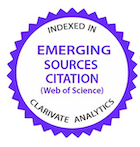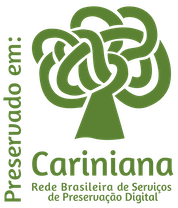Ocorrência de genes codificadores de enterotoxinas estafilocócicas em amostras de leite de vacas
DOI:
https://doi.org/10.1590/1809-6891v19e-43108Resumo
Objetivou-se com este trabalho identificar a ocorrência de genes codificadores de enterotoxinas estafilocócicas (sea, seb, sec e seg) e do gene da toxina 1 responsável pela síndrome do choque tóxico (tst) em isolados de Staphylococcus aureus procedentes de casos de mastite bovina, no estado de Pernambuco, Brasil. Foram analisados 93 isolados e observou-se a presença de genes toxigênicos em 20 (21,6%) deles, dos quais 11 (55,0%) foram positivos para o gene tst, sete (35,0%) para o gene sec e dois (10,0%) para o gene seg. Dentre os 20 isolados que amplificaram na PCR para presença dos genes sec, seg e tst, 16 (80,0%) foram positivos apenas para um gene e quatro (20,0%) foram positivos para dois genes (sec e tst). Das 17 propriedades de onde as amostras tiveram origem, sete (41,2%) apresentaram amostras positivas para pelo menos um dos genes sec, seg e tst. Este é primeiro registro de ocorrência dos genes codificadores das enterotoxinas SEC e TST-1 em amostras de leite de vacas com mastite no estado de Pernambuco, Brasil.
Palavras-chave: Mastite; Patogênese; PCR; Staphylococcus aureus
Downloads
Publicado
Como Citar
Edição
Seção
Licença
Copyright (c) 2018 Ciência Animal Brasileira

Este trabalho está licenciado sob uma licença Creative Commons Attribution 4.0 International License.
Autores que publicam nesta revista concordam com os seguintes termos:
- Autores mantém os direitos autorais e concedem à revista o direito de primeira publicação, com o trabalho simultaneamente licenciado sob a Licença Creative Commons Attribution que permite o compartilhamento do trabalho com reconhecimento da autoria e publicação inicial nesta revista.
- Autores têm autorização para assumir contratos adicionais separadamente, para distribuição não-exclusiva da versão do trabalho publicada nesta revista (ex.: publicar em repositório institucional ou como capítulo de livro), com reconhecimento de autoria e publicação inicial nesta revista.
- Autores têm permissão e são estimulados a publicar e distribuir seu trabalho online (ex.: em repositórios institucionais ou na sua página pessoal) a qualquer ponto antes ou durante o processo editorial, já que isso pode gerar alterações produtivas, bem como aumentar o impacto e a citação do trabalho publicado (Veja O Efeito do Acesso Livre).






























